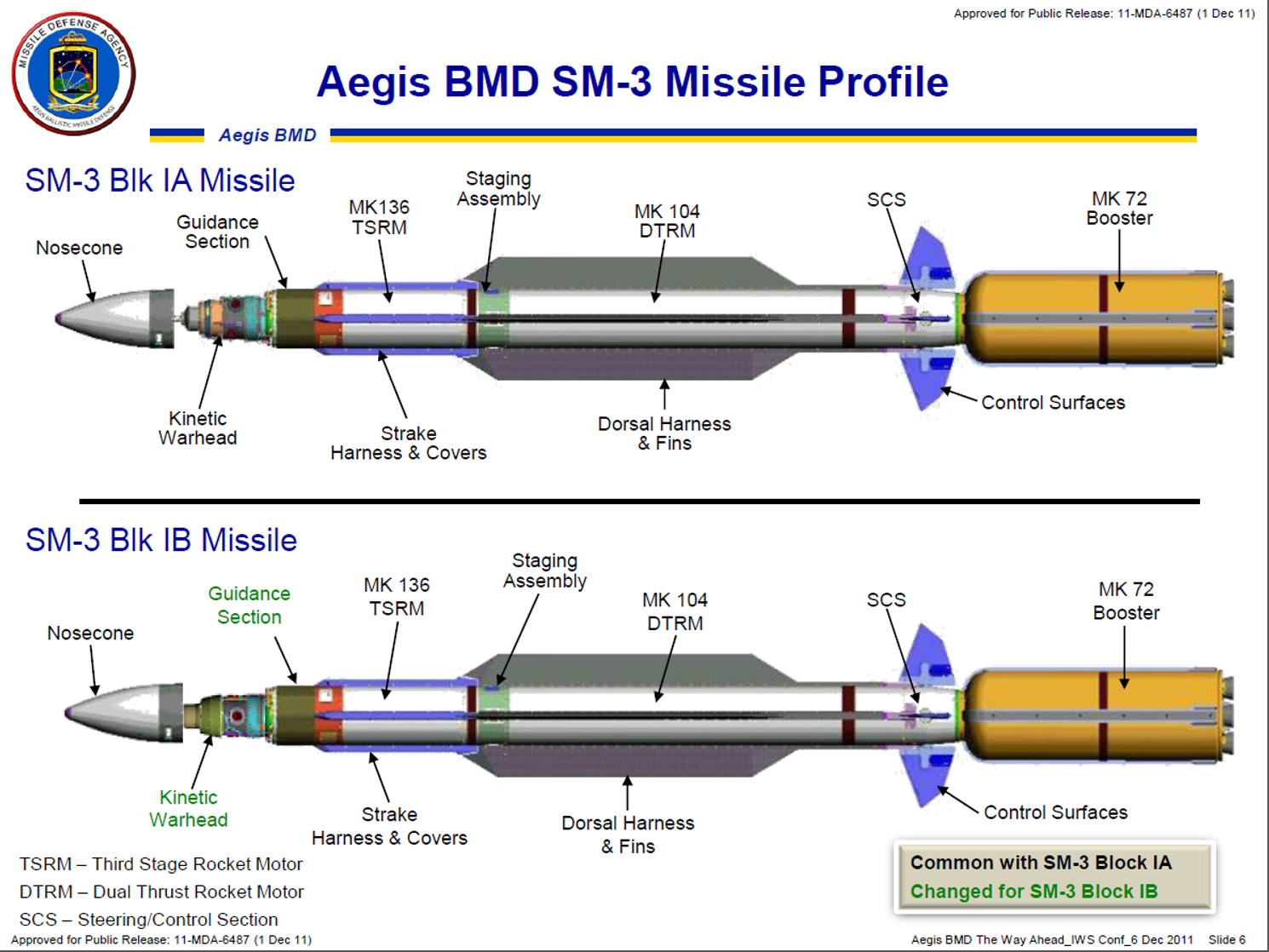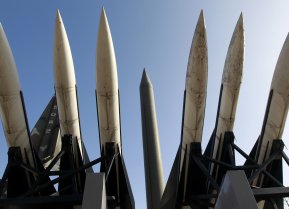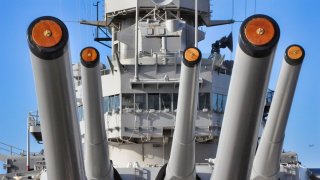Some Experts Say the Era of Big Navy Aircraft Carriers and Destroyers Is Over
The U.S. Navy faces emerging threats from sophisticated drones and anti-ship missiles, raising questions about the viability of large surface vessels like aircraft carriers
Summary: The U.S. Navy faces emerging threats from sophisticated drones and anti-ship missiles, raising questions about the viability of large surface vessels like aircraft carriers. Despite these challenges, the complete obsolescence of U.S. surface fleets is unlikely. Drone swarm attacks, like those conducted by Iran-backed Houthi rebels, showcase the potential of asymmetrical warfare to disrupt operations.
-Meanwhile, China's stockpiling of long-range anti-ship missiles, such as the DF-21D and DF-26B, poses a significant threat. However, the U.S. Navy is adapting through advanced missile defense systems like AEGIS and tactics to avoid detection.
-The vastness of the ocean offers natural concealment, and future strategies may include a shift towards smaller, stealthier surface vessels and submarines. Despite the challenges, the U.S. Navy continues to build Ford-class carriers, indicating confidence in their current strategic and technological approaches.
How the U.S. Navy Is Countering Drone and Missile Threats
Sophisticated drones and precise anti-ship missiles are capable of threatening U.S. Navy surface vessels. The emergence of such weapons, and the improvement in defense technologies and techniques, has some observers asking if ships such as American supercarriers are now obsolete.
Yes, the naval theater is changing. Tactics and procurement will have to change with it. However, it is unlikely that the entire U.S. surface fleet will simply be rendered obsolete.
Emerging Threats
Various new technologies threaten to dent the viability of U.S. surface vessels. First among them is the drone. Earlier in the year, Iran-backed Houthi rebels targeted U.S. warships in the Red Sea. The Houthis deployed dozens of drones, demonstrating a likely future tactic, the swarm attack. U.S., French, and British forces shot down most of the drones, but the attacks gave the warships pause, and that is significant in itself.
The Houthis, deploying relatively cheap and simple technology, were able to disrupt the operations of a vastly more sophisticated, vastly better funded enemy. The episode hints at the asymmetrical advantages drone warfare may offer in the future.
If used cleverly, drones have the potential to hinder, and perhaps to destroy, large surface vessels.
Another threat is the anti-ship missile. China has been stockpiling these projectiles, including such missiles as the DF-21D, which has a 1,000-mile range, and the DF-26B with its 2,500-mile range.
Andrew Erickson, an expert on Chinese missiles, suspects the Chinese have 200-plus DF-26 launchers. Erickson also believes that the DF-26B has the targeting abilities to be effective against enemy shipping. If true, the DF-26B could pose a significant threat to U.S. surface vessels.
Countering the Threat to the U.S. Navy
As weaponry advances and adapts, so too will the U.S. Navy. The U.S. will continue to rely on the AEGIS sea-based ballistic missile defense system and on missile interceptors like the SM-6 and SM-3.
Nor will missile defense systems be the first line of defense. First, U.S. surface vessels will try to evade detection and tracking. The good news for these ships is that the ocean is huge. Finding a surface vessel in the open ocean is not easy.

The South China Sea alone covers an area of 1.4 million square miles. An aircraft carrier measures just 1,000 feet long. Even if a surface vessel is detected, the vessel must then be tracked for long enough to launch a strike against it.
In the future, the U.S. Navy might recalibrate its fleet to rely more on smaller surface vessels, perhaps incorporating stealth technology, and on submarines. Both of these options are harder to detect and could offer a nimbler force structure.
War planners are not, however, scrambling to recalibrate the force structure, and the Navy is proceeding with the construction of its Ford-class carriers. This suggests that the Navy is comfortable with the equipment it has. That’s not to say that war planners always get it right. But the current threat level seems acceptable.
About the Author: Harrison Kass
Harrison Kass is a defense and national security writer with over 1,000 total pieces on issues involving global affairs. An attorney, pilot, guitarist, and minor pro hockey player, Harrison joined the US Air Force as a Pilot Trainee but was medically discharged. Harrison holds a BA from Lake Forest College, a JD from the University of Oregon, and an MA from New York University. Harrison listens to Dokken.
All images are Creative Commons.


